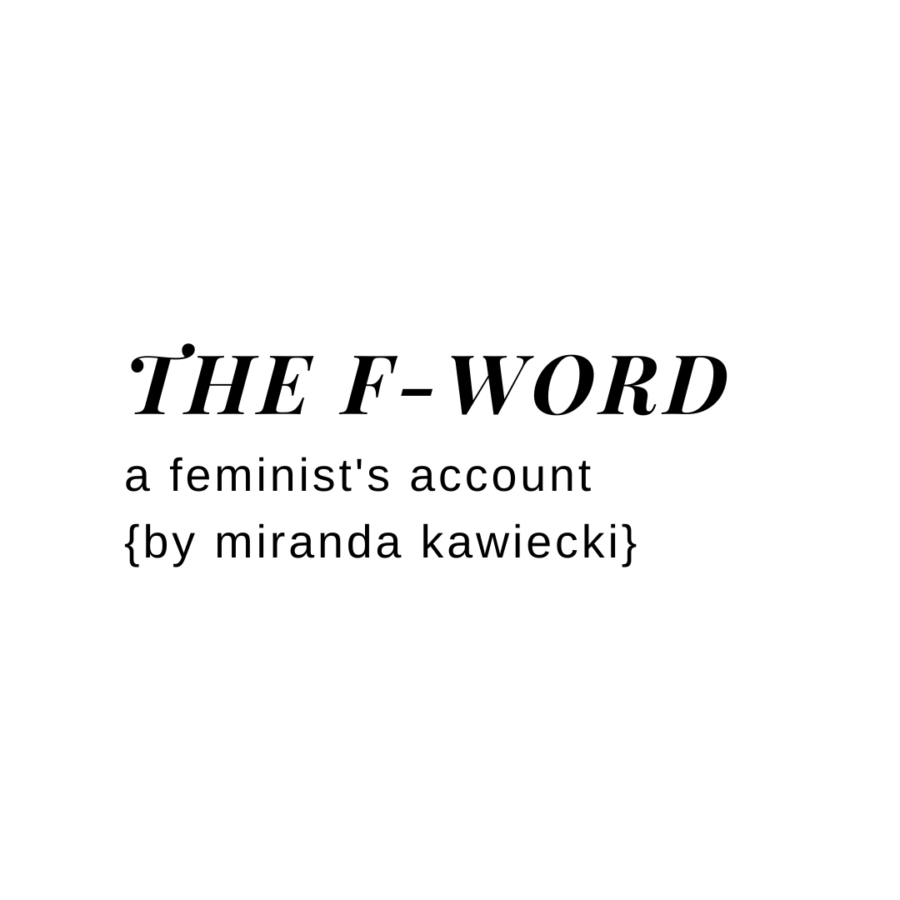The F Word: A Feminist’s Account
Whenever the word feminist rolls off my tongue, it is met with a wince.
The reaction it instigates would make one believe that is a curse word, something aggressive and outright offensive. The truth of the matter is, it’s always been at the root of controversy as a response to the widespread oppression and harm towards women. It is a word often misunderstood, as well as misdefined.
So what exactly is feminism? Feminism is defined by Merriam Webster as “belief in and advocacy of the political, economic, and social equality of the sexes expressed especially through organized activity on behalf of women’s rights and interests.” Simply, it is a movement fighting for gender equality.
The definition itself is of good moral grounds and yet, it is considered controversial.
Feminism has become more complex over the years, as the issue of women’s rights is multifaceted in itself. Women come from all walks of life, and as a result, feminism is unique to the individual. Its influence, despite being overshadowed by stigma and disinterest, is ingrained in the history and future of women’s liberties.
A Brief History
Feminism is, generally, an ideology that is practiced through advocacy for women in a variety of issues. However, it is characteristic of the movement to be historically molded into three waves: first, second, and third. It is important to note that the waves define progression in the Western world, specifically from an American perspective.
The first wave focused on women’s suffrage, or the right to vote, from the 18th to 19th centuries. It is essentially the beginning of the women’s rights movement in the United States, marked by the 1848 Seneca Falls Convention. The right to vote was not only a literal win, but a symbolic motion for women to be actively involved in the decisions of the nation.
Second-wave feminism was critical to progress in women’s rights in regard to economic and social gender equality, which began in the early ‘60s and lasted roughly two decades. It was greatly influenced by the strategies of the Civil Rights Movement and brought about improvement on a federal level. Second-wave feminists achieved the Equal Pay Act of 1963, The Equal Credit Opportunity Act, Title IX, and Roe v. Wade.
In the ‘90s, third-wave feminism built off the foundation of the second-wave in the promotion of sexual liberation. While its beginnings are fuzzy, the Anita Hill hearings, in which Hill testified against a Supreme Court nominee for sexual harassment, are credited with fueling a new surge of activism.
Third-wave feminists questioned and sought to redefine the media’s image of womanhood, gender beauty, sexuality, and femininity. They continued the work of their predecessors while addressing problems of the modern woman, considering race, class, and gender identity. This wave overlaps into the 21st century as feminism is deeply intersectional, meaning that feminists are encouraged to advocate and support women of all backgrounds. This idea of “intersectionality” was developed by lawyer Kimberle Crenshaw to illustrate how an individual’s identities (race, class, gender, etc.) affects how they are treated by society at large.
A proposed fourth-wave, beginning circa 2012, holds a focus on sexual harassment, rape culture, and body shaming in a vastly technological world. One of the most defining contributions is the ‘me too’ movement, originally created by Tarana Burke in 2007 with the intention of being a platform for black women to step forth with sexual abuse allegations. The movement evolved as actress Alyssa Milano popularized #metoo, opening the conversation on social media and breaking the silence about sexual assault in not only the film industry, but the workplace at large. TIME’S UP also launched in response to sexual assault in Hollywood, contributing to the widespread surge.
A parallel of the feminist movement, womanism, was coined by author and social activist Alice Walker in 1982. Walker defines being womanist as a “black feminist or feminist of color.” This movement zeroes into the entanglement of prejudice one faces being black and a woman.
Are You a Feminist, or a Man-Hater?
Feminists do not hate men, even though they have been told they do for centuries. In fact, a man can be a feminist. At the heart of the movement is a want for peace between the sexes.
That being said, some women may hate men; however this would make them “misandrists,” people who strongly dislike men. Opponents of feminism may argue that the movement is misandrist because of the unfortunate few. But to make it clear, feminist is not synonymous with misandrist. An individual man cannot be blamed for a history of misogyny, or the ingrained prejudice against women. Rather, feminism calls to the attention that a effort needs to be made to create equity in a male-dominating society, in which men are in leadership positions making decisions for women. For example, restrictive abortion laws are often put into legislation by male politicians, one of the most recent being the Texas Heartbeat Law.
The movement that is intended to be empowering is even polarizing for women. While the concept of an anti-feminist woman is oxymoronic, a statistic taken from Pew Research Center uncovers that only 61% of American women describe themselves as feminists. The numbers varied by age, political affiliation, and race, all of which factor into perception of the movement. The younger and more liberal the woman, the greater the support. Conservative, older, and mostly white women had reservations. The stigma of the movement, pushed through political agenda and culture, are what may sway women from supporting the movement out of concern of being judged and called a radicalistic or misandrist.
46 Male Presidencies and Counting
In a 21st-century society that promises gender equality, one may question if the perpetuation of such a movement is even necessary. Arguably, it is more important than ever as women are blossoming into awareness of their potential for strong social and economic mobility.
Feminism is the antidote to the longstanding damage of a patriarchal society, meaning a world run by men. In a world as such, men have been given the entitlement to be in control. While leadership can be earned, a woman must prove herself to be just as competent as her male counterparts, regardless of qualification. The perception of women being the weaker sex, emotionally and cognitively, is the reason as to why there is a lack of women in positions of leadership.
When a male majority makes decisions for women, women are not properly represented. Data from Represent Women suggests that even though women make up 51% of the US population, they make up only 27% of Congress at large, 24% of the Senate, 27% of the House of Representatives, and 0% of presidents. As for women of color, they constitute a mere 9% of total members of Congress. Congress is responsible for making laws — if women, especially women of color, are not making and passing laws, are they being considered in the impacts of the legislation?
The unique issues of the modern woman are vast: ranging from sexual harassment, reproductive rights, and in nations outside of the United States, a complete lack of civil liberties and education. Women need to lead other women into progress.
For Your Consideration
I call upon readers to construct their own educated opinions on feminism and consider its purpose, regardless of whether you will ever identify as a feminist yourself.
With continuing restrictions on women’s healthcare rights, sexual harassment and assault, careers, and education, it is evident that the ladder to that sublime glass ceiling still has many rungs. Without support from all genders, especially fellow women, that journey will be arduous.
Feminists, keep your heads high and your hearts open to all women. And for everyone, reflect on how you treat women in your life. You may find that the world is always a few steps behind.


